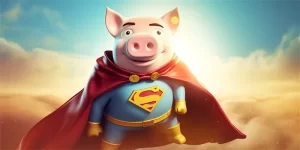YouTube, the world’s largest video sharing platform, has become a popular platform for content creators to showcase their talent, entertain, educate, and connect with a global audience. While many wonder how YouTube views translate into revenue, this article will delve into the various ways through which YouTube generates income for creators.

1. Advertising Revenue
One of the primary sources of income for YouTube and its content creators is through advertising. YouTube allows creators to monetize their videos by displaying ads before, during, or after their content. This generates revenue based on the number of views and engagement the ads receive.
2. Google AdSense Partnership
YouTube is owned by Google, and creators who join the YouTube Partner Program gain access to Google AdSense. AdSense is an advertising platform that matches ads to relevant videos and creators earn a percentage of the revenue generated from those ads.
3. Sponsored Content
Many content creators collaborate with brands to promote their products or services. These collaborations are known as sponsored content or brand partnerships. Creators earn money through endorsements, product placements, or sponsored videos, where they highlight or review products in exchange for compensation.
4. Channel Memberships
YouTube has a feature called channel memberships, where creators can offer exclusive perks, extra content, or early access to their most loyal viewers in exchange for a monthly fee. This allows creators to earn recurring revenue from their dedicated fanbase.
5. Merchandise Sales
Creators often develop their own merchandise, such as t-shirts, hats, or other products related to their brand. YouTube provides creators with a platform to promote and sell these items, allowing them to generate additional income.
6. Crowdfunding
Some creators rely on crowdfunding platforms like Patreon or Kickstarter to receive direct financial support from their audience. Content creators offer exclusive rewards or experiences to their patrons in exchange for monthly donations, further supporting their content creation.
7. YouTube Premium
YouTube Premium is a subscription-based service that allows users to watch ad-free videos, access YouTube Originals, and enjoy other premium features. Creators earn a portion of the revenue generated from YouTube Premium subscriptions based on the watch time their content receives.
8. Content Licensing
YouTube offers opportunities for creators to license their content to third parties, such as television networks, streaming services, or other platforms. This allows creators to earn additional income from the distribution of their videos on other platforms.
9. Super Chat and Super Stickers
During live streams, viewers have the option to purchase Super Chats or Super Stickers to stand out in the chat and support their favorite creators. Creators receive a portion of the revenue generated from these purchases.
10. Fan Funding
YouTube previously had a fan funding feature called “YouTube Fan Funding,” which allowed viewers to make voluntary monetary contributions to support their favorite creators directly. Although this feature is no longer available, it was another way for creators to earn money through viewer contributions.
11. Music Sales
For creators who compose and produce their own music, YouTube provides the opportunity to sell their tracks through platforms like iTunes, Google Play Music, or other music distribution services. This allows creators to earn money from music sales on top of their YouTube views.
12. Channel Sponsorships
Creators with successful channels often attract sponsorships from companies or brands looking to reach their target audience. These sponsorships can range from video integrations, shout-outs, or dedicated segments within the content, providing creators with additional revenue.
13. Public Speaking and Events
Popular YouTube creators often receive invitations to speak at events, conferences, or conventions. They may charge a fee for their appearance, keynote speeches, or participation in panels, generating income outside of YouTube.
14. Licensing of Intellectual Property
Creators who develop original characters, storylines, or concepts may be able to license their intellectual property for merchandise, video games, or other media formats. This provides creators with another avenue for revenue generation.
15. Affiliate Marketing
Some creators use affiliate marketing to earn money by promoting products or services and earning a commission for each sale made through their unique affiliate links. This allows creators to earn money through recommended products or collaborations with brands.
In conclusion, YouTube offers content creators a multitude of opportunities to monetize their views and engage with their audience. From advertising revenue to sponsored content, merchandise sales to channel memberships, YouTube has created a diverse ecosystem that enables creators to turn their passion into a sustainable income stream.
References:
1. YouTube Partner Program: https://www.youtube.com/yt/creators/learn-and-connect
2. Google AdSense: https://www.google.com/adsense/start/
3. Patreon: https://www.patreon.com/
About the Author:
John Smith is a digital marketing expert with a focus on social media and video platforms. He has helped numerous content creators build their online presence and maximize their revenue potential. The author is not affiliated with YouTube or any mentioned companies. The featured image is an original creation by the author.








